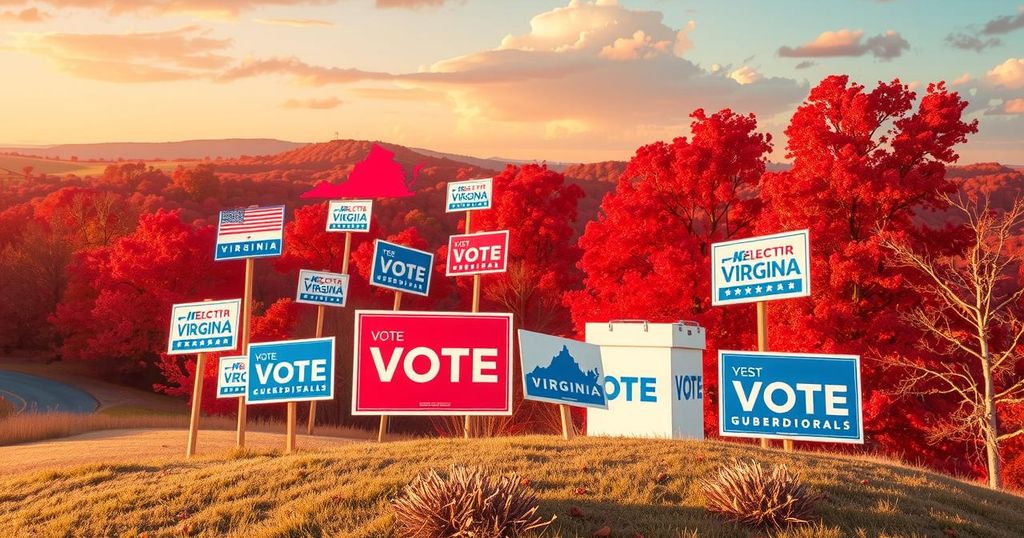Virginia’s 2025 Gubernatorial Election: A Pivotal Political Barometer

Virginia’s 2025 gubernatorial election is vital as it may indicate national sentiments about the presidential administration. The Commonwealth has shifted Democratic yet historically swings against the sitting president. Abigail Spanberger leads early polls, but past elections reveal that races can close unexpectedly. Both parties are strategizing as 2026 elections approach, amid changing voter responses and approval ratings.
Virginia’s gubernatorial election in 2025 is poised to draw significant attention. Only two states will hold gubernatorial elections that year, with much of the focus on Virginia. It has become a keen area of interest due to its perceived ability to reflect national sentiments about the current presidential administration. While New Jersey has its own importance, Virginia’s trends suggest its outcomes may resonate more.
Historically, New Jersey has not elected a Republican senator since the early 1970s and has consistently voted for Democratic presidential candidates since George H.W. Bush in 1988. Yet, it did manage to elect Republican Chris Christie as governor in 2009 and 2013. Virginia presents a contrasting narrative, having shifted more Democratic in recent years, especially after voting for the Republican presidential candidate consistently from 1968 to 2004 before leaning left in 2008.
The gubernatorial situation is complicated in Virginia, chiefly due to a unique law restricting governors from seeking consecutive terms. This has led to a noteworthy trend where voters have historically cast their ballots for a governor from the opposing party of the sitting president from 1977 up to 2013. However, the state surprised many by electing Republican Glenn Youngkin as governor in 2021, despite voting for Democrats in the presidential races of 2020 and 2024.
Virginia’s role as a swing state for gubernatorial races adds to the drama. Observers are keenly watching the upcoming election, especially as a barometer for how Donald Trump’s influence may resonate with voters. Currently, indicators show that the Democrats may have a slight edge, with polls suggesting Abigail Spanberger, the Democratic nominee, is leading ahead of the election. This is noteworthy against a backdrop of low approval ratings for President Trump, hovering around 40%, per Pew Research.
However, historical patterns reveal that Virginia races can turn unexpectedly close. For instance, both the 2013 and 2021 elections concluded with winners decided by a mere couple of percentage points. Polls, while helpful, can be deceptive. Terry McAuliffe, the Democratic nominee in 2013, had a strong lead but found himself in a much tighter race than predicted. When he ran again in 2021, his lead still held until late October, when Republican momentum shifted the tide toward Youngkin.
As candidates gear up for this crucial race, the losing party will undoubtedly have significant introspection ahead of the 2026 elections, involving both the Senate and House. Early voting for party primaries has already commenced, setting the stage for what appears to be a tightly contested political battle ahead.
In summary, Virginia’s upcoming gubernatorial election in 2025 is critical not just as a local political event but as a barometer for national sentiments. It reflects the complex dynamics of party strategies, voter tendencies, and presidential influence within a pivotal swing state. As early voting progresses, both parties will have to closely analyze their approaches based on voter reactions leading up to the election.
Original Source: www.wsls.com






